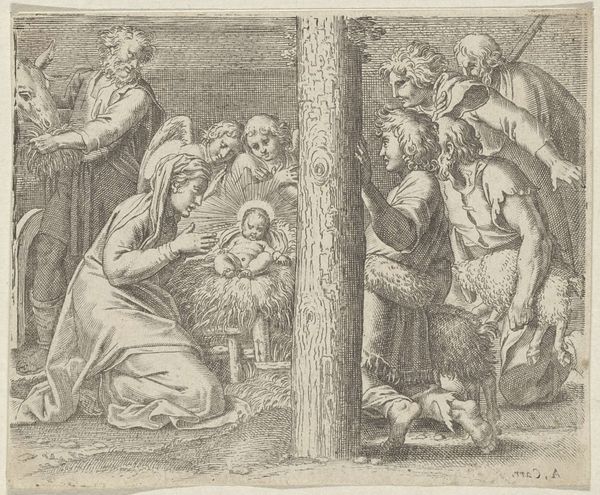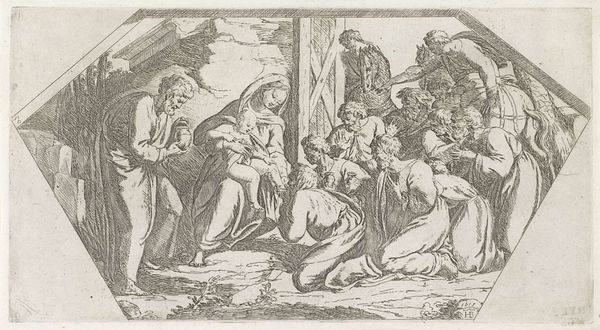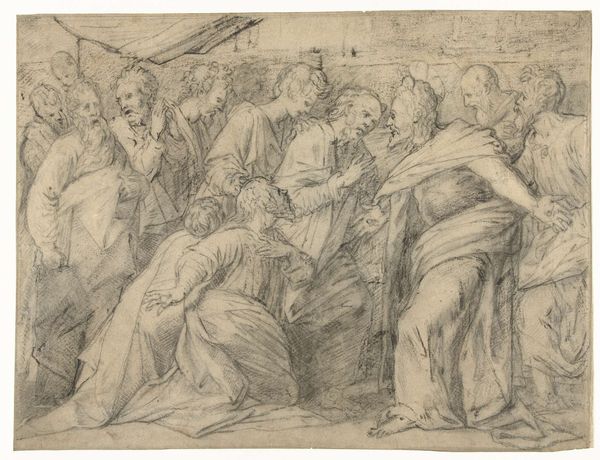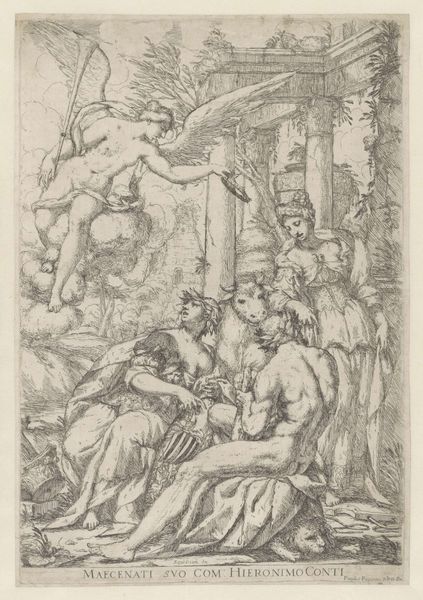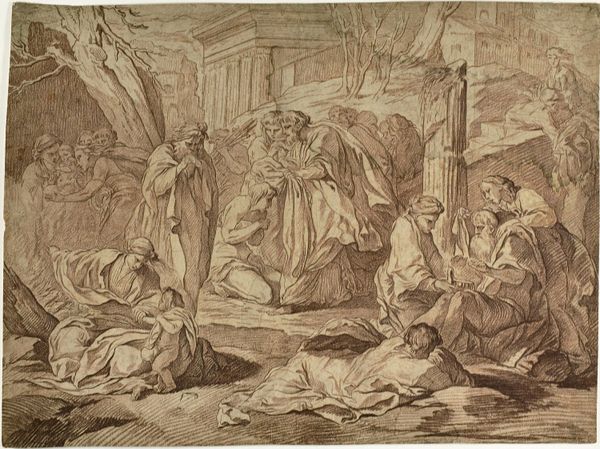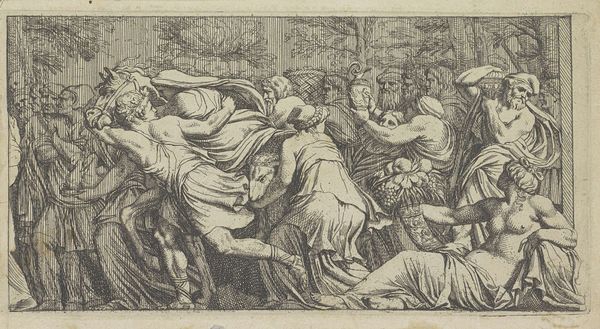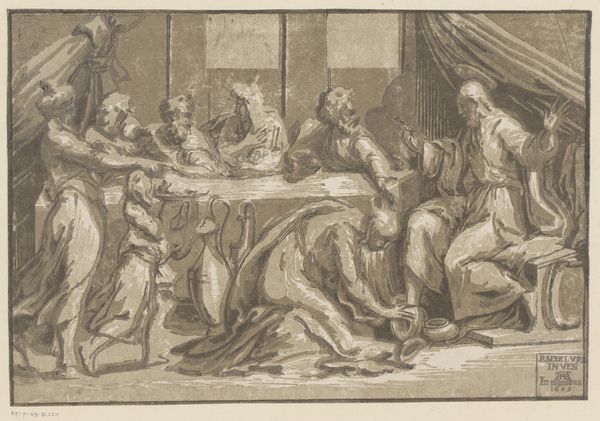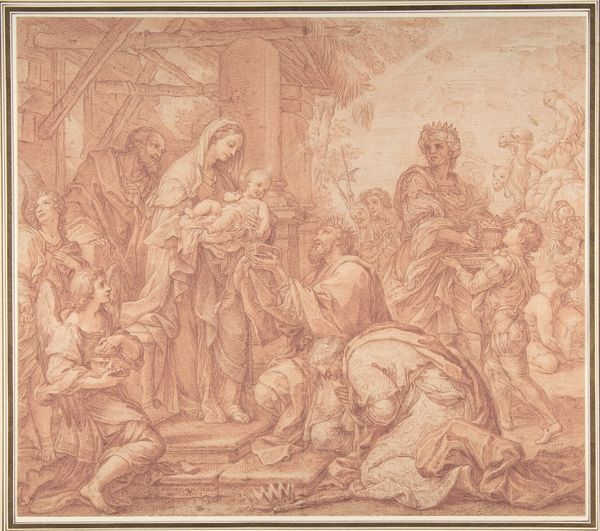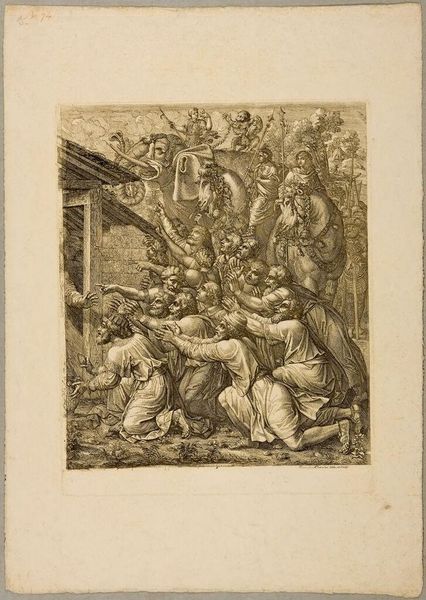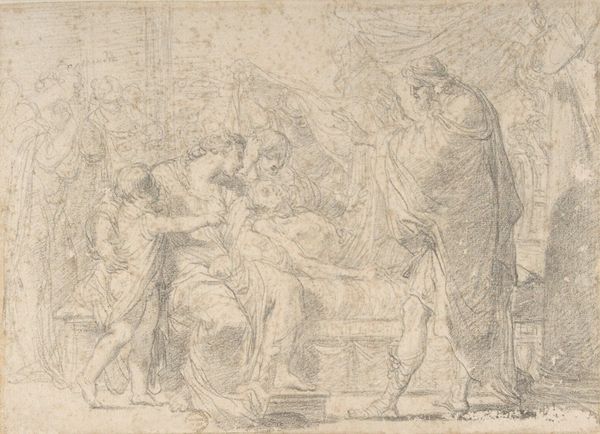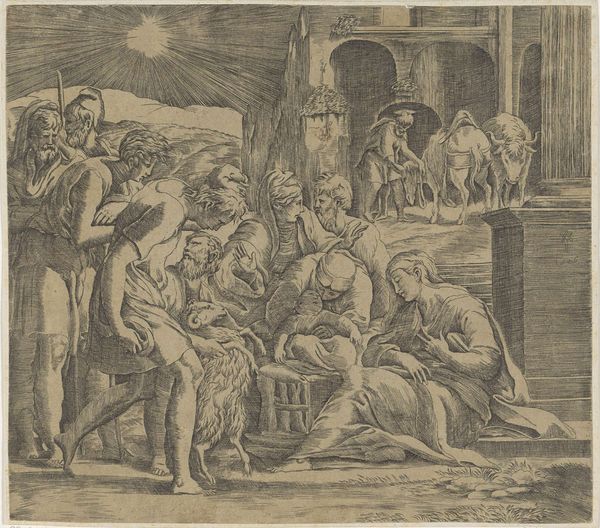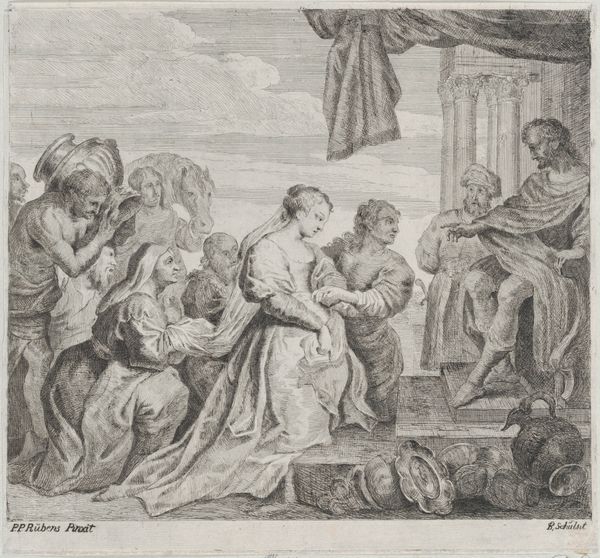
print, etching
#
narrative-art
#
baroque
# print
#
etching
#
figuration
#
history-painting
#
italian-renaissance
Dimensions: height 105 mm, width 131 mm
Copyright: Rijks Museum: Open Domain
Curator: I’m immediately struck by the intense gaze of the shepherds peering in. It feels less reverent and more… intensely curious. Almost voyeuristic. Editor: That’s a strong read. Let’s consider this print, "Adoration of the Shepherds," dating to around 1606 and attributed to Annibale Carracci. It resides here at the Rijksmuseum, rendered as an etching. Consider how Carracci, associated with the Italian Renaissance, used figuration. Curator: Yes, the figures are what capture my attention. Their faces, illuminated in contrast to the dark background. Look at their animalistic hides too - rough, primal, drawn so distinctly against the radiant glow of the Christ child. It's an image that encapsulates the idea of finding holiness in what's humble and imperfect. Editor: It does engage a compelling theme of narrative art – in particular, history painting. The setting – this makeshift stable - places the sacred birth squarely in a real, accessible world. But it’s also important to acknowledge how the church historically commissioned these images. They intended to elicit very specific responses – humility, piety, adherence to doctrine. The theatrical nature of it all serves that function. Curator: Yet the sheer humanity in their faces transcends any sort of imposed meaning. Think of all of the visual traditions connected to a "good shepherd," this is not that. These feel less like idealized guardians and more like individuals encountering something miraculous. Editor: And Carracci delivers that miracle through strategic light and shadow. The soft glow enveloping the manger sharply contrasts the coarser treatment of the surrounding figures. Consider also how prints at this time, were reproducible images accessible to broader audiences. Curator: The light and shadow are captivating – what draws you into the scene and keeps you engaged with its symbols, its deeper messages of love and divinity entering the world. I agree about wider access too, it could provide greater personal understanding and religious conviction for more people. Editor: That’s insightful – ultimately, art creates its own ripple effect. Thank you for considering how faith intersects with politics. Curator: Thank you for offering different points of entry! And let the light guide the way… perhaps that's too cliché?
Comments
No comments
Be the first to comment and join the conversation on the ultimate creative platform.
